Recent Articles
Popular Makes
Body Types
2018 Toyota Prius Road Test and Review
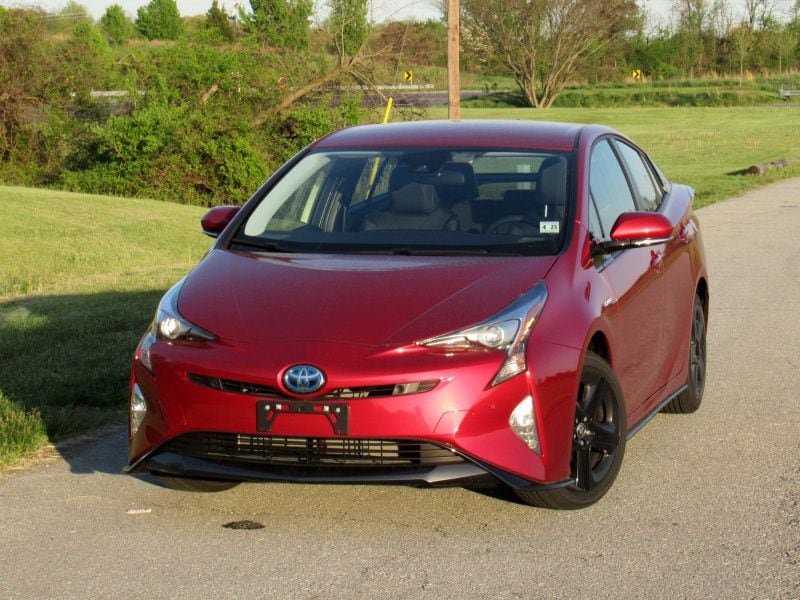
1ToyotaPriusfront ・ Photo by Brady Holt
It’s been a while since gas prices topped $4 per gallon. But if you’re remembering those days and thinking about a fuel-efficient car, or are looking to reduce your carbon footprint, chances are you’ve considered the Toyota Prius. It’s an icon in the fuel-saving landscape, having outlasted various competitors with its appealing blend of distinctive looks, a spacious interior, reasonably affordable prices, an unassailable reliability record, and — most importantly — exceptional fuel economy.
Today’s Prius faces more competition than ever. Not only have all-electric vehicles captured the fuel-efficiency mantle from gas-electric hybrids like the Prius, but ordinary gas-powered cars have also become increasingly efficient. But Toyota has doubled down on the Prius’ longtime strengths, while also improving its driving dynamics, safety features, and in-dash technology. The 2018 Prius remains a go-to option as a functional fuel-sipper. Depending on your preferences, it could still be the best choice for you.
Pricing and Options
The 2018 Toyota Prius is a five-door compact hatchback that’s priced from $23,475, about the same price as the company’s mid-size Camry sedan. (A note of caution: Don’t confuse this Prius with the smaller Prius c or the larger Prius v, which use older technology.)
Even the base Prius One trim enjoys such luxuries as keyless entry with push-button starting, a suite of advanced safety features, and a touchscreen infotainment system, while the Two trim, at $24,685, adds a few typically standard features like a rear windshield wiper and front seatback pockets. We tested a mid-level Prius Three ($26,735), which adds Qi wireless smartphone charging, some upgraded interior trim, and a larger in-dash touchscreen. We also tested a Three Touring ($28,115), which further adds imitation-leather upholstery and larger blacked-out 17-inch wheels. The top-of-the-line Four ($29,685) and Four Touring ($30,565) have an excellent new feature this year: a double-height 11.6-inch touchscreen, previously found only on the Prius Prime plug-in hybrid. All Prius trims include two years or 25,000 miles of free scheduled maintenance.
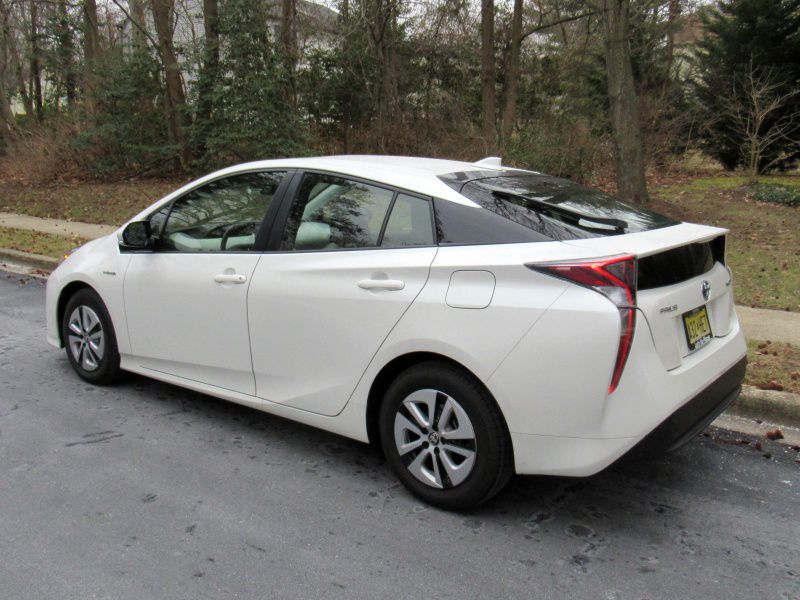
Photo by Brady Holt
Safety Comes Standard
We mentioned the Prius’ standard safety technology. It’s part of a suite called Toyota Safety Sense-P, and it includes full-speed radar-based cruise control, emergency automatic braking, a lane-departure system with lane-keeping steering assist, and automatic high beams. On many vehicles, this technology is available exclusively on pricey trim levels if they offer it at all. One downside: You can only get blind-spot monitoring on the Four and Four Touring.
The Prius is also a 2018 Top Safety Pick from the Insurance Institute for Highway Safety, and it earned the top score of five out of five stars from the National Highway Traffic Safety Administration. For young families, the IIHS also gave the Prius top ratings for the ease and safety of child-seat installation.
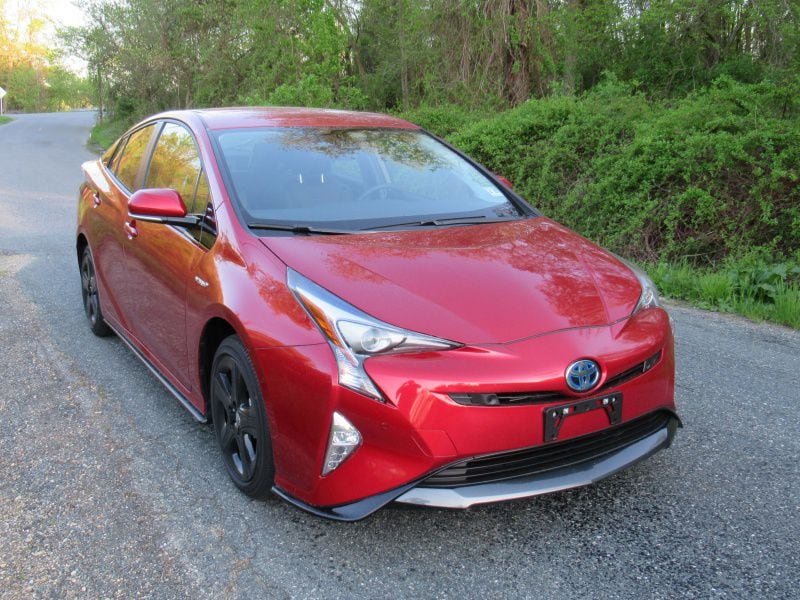
Photo by Brady Holt
Hybrid Life
Toyota has continuously refined the Prius’ hybrid technology since the car first appeared as a 2001 model, but the basic idea hasn't changed: Propulsion comes from both a small four-cylinder gasoline engine and two electric motors, making a total of 121 horsepower. The electric motors can run the car gas-free in certain circumstances, including gentle acceleration and steady cruising even at high speeds. The gas engine helps out or takes over the rest of the time. It also recharges the electric batteries whenever it’s running. The Prius’ regenerative braking system also recaptures energy from braking friction, and uses that to recharge the battery further.
This setup lets drivers dramatically improve their mileage by maximizing the time spent in all-electric operation. That comes from accelerating only gently and using Toyota’s EV Mode, which allows harder gas-free acceleration at low speeds (below about 25 mph). If you drive the Prius just like any other car, you’ll still get great gas mileage — but the best results come from a concerted effort to keep the engine off. We spent 44 percent of our weeklong test using electric-only propulsion.
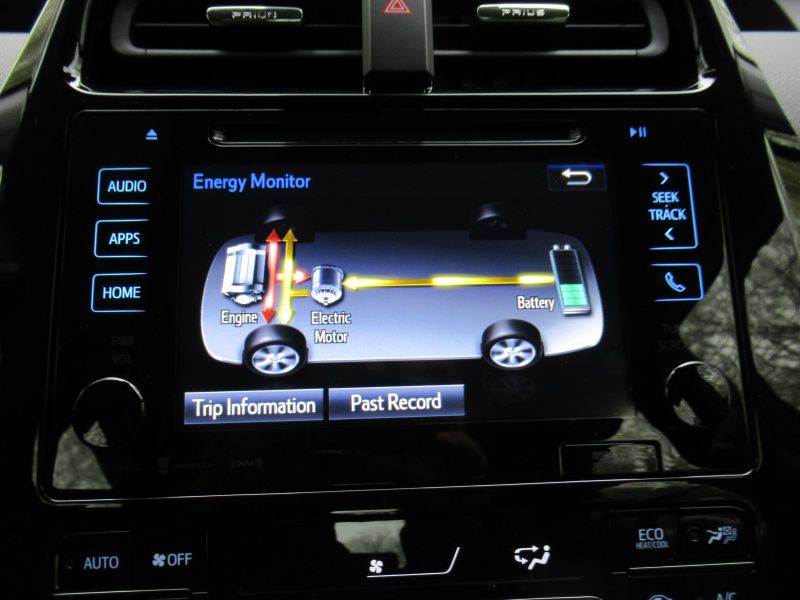
Photo by Brady Holt
Fantastic Fuel Economy
The result of the Prius’ hybrid technology — and its aerodynamic shape — is stellar fuel efficiency. The EPA rates most trim levels, including our tested Three and Three Touring, at 54 mpg in the city and 50 mpg on the highway. As these ratings suggest, the Prius is more efficient at lower speeds than higher ones, the opposite of most cars. We averaged 57 mpg in our tested Prius Three and 55 mpg in our Three Touring, and we beat 60 mpg on trips when we minimized freeway driving.
If you don’t need many luxury features, the Prius Two Eco version has a lighter battery and some aerodynamic enhancements, which boost its EPA ratings to 58 mpg in the city and 53 mpg on the highway. Note that you never plug the standard Prius into an outlet; its electric batteries recharge as you drive normally. But if you want further fuel savings, the Prius Prime plug-in model can travel 25 miles on an all-electric charge before operating like a standard Prius.
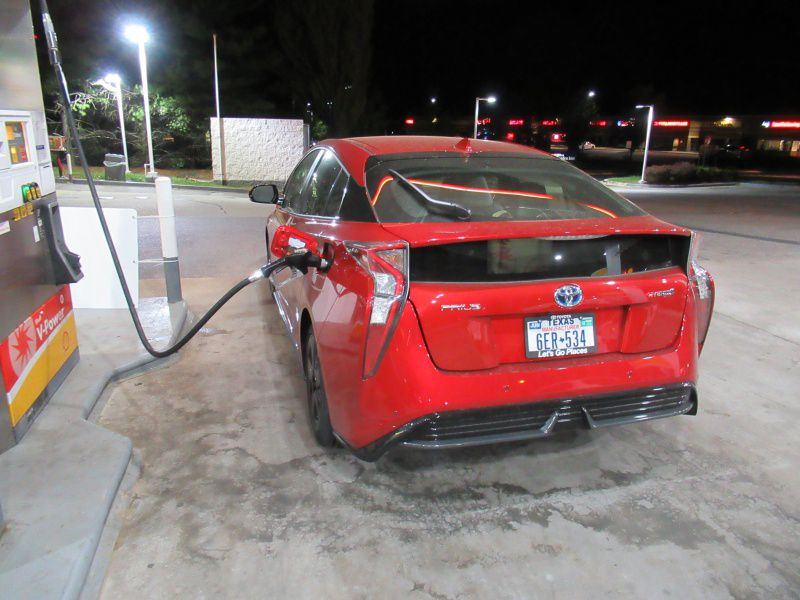
Photo by Brady Holt
Funky Styling
The Prius has always looked a little different from ordinary cars, especially once Toyota really got to work maximizing its aerodynamics. The current generation, on sale since the 2016 model year, is perhaps the funkiest yet. Wedges and swoops fly across the body, headlights, and taillights. Our Three Touring’s blacked-out wheels make it look even more aggressive. Not everyone will love it, but Toyota has ensured that today’s Prius won’t be mistaken for older generations.
The interior also adopts an intentionally unique vibe. Instead of a conventional gauge cluster behind the steering wheel, the Prius has a digital speedometer and other displays sitting at the top-center of the dashboard. Meanwhile, large pieces of shiny white plastic on the instrument panel and steering wheel recall old Apple eMac computers. And Toyota’s unconventional gear selector saves space but requires a learning curve for first-time Prius drivers. Lastly, one area that’s not super-high-tech is the infotainment system, which is shared with other mid-2010s Toyotas. It doesn’t have the slick graphics or Apple CarPlay integration found in the latest all-new Toyota vehicles.
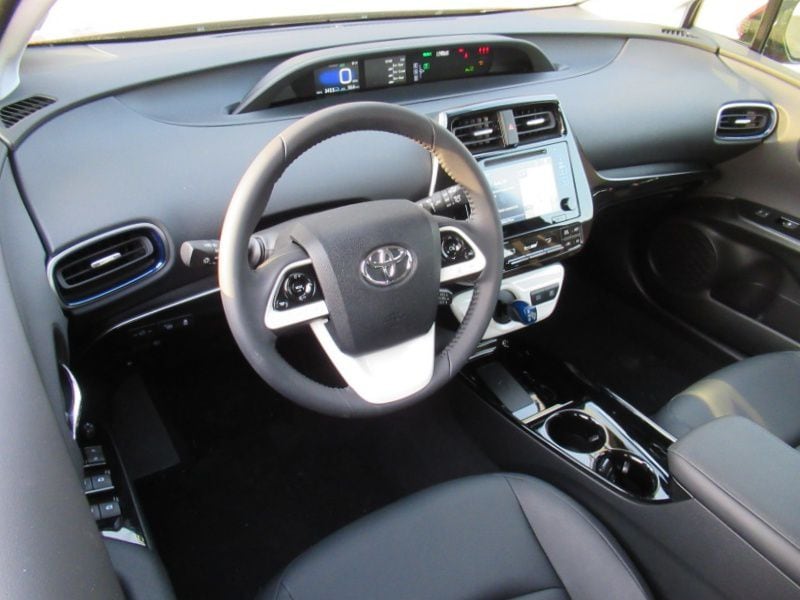
Photo by Brady Holt
Roomy Interior
The Prius has always been popular for its fuel economy, but owners have also appreciated its roomy interior. Though it’s a compact hatchback, it comfortably seats four adults (or five in a pinch) and has generous space for cargo. You get 24.6 cubic feet of luggage volume behind the rear seat, and it folds flat in a 60-40 split to open up an even more generous space. Drivers coming from sedans will marvel at a hatchback’s versatility, while even SUV owners won’t have to sacrifice too much.
The competing Hyundai Ioniq has even better interior dimensions on paper, though the Prius felt more open and airy to us in both the front and rear seats, as well as the cargo hold. And as we mentioned, the Prius has outstanding ratings for child-seat installation.
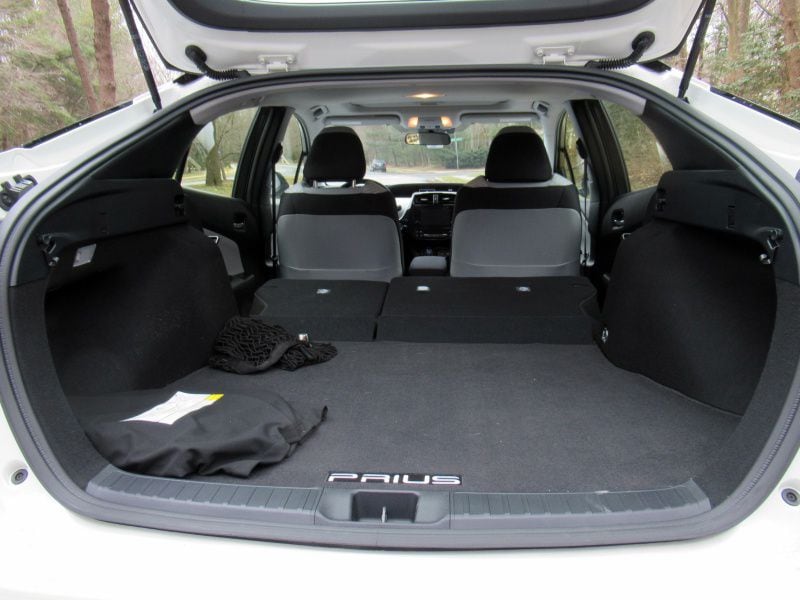
Photo by Brady Holt
Almost Sporty
As a car that’s so heavily focused on fuel economy, the Prius has never been known as a sporty car. And with just 121 horsepower, the current generation is still no performance machine. You can select a “sport” driving mode that makes the throttle respond more quickly, but putting your foot all the way to the floor results in a lot of engine noise. The Prius is much happier gliding along as you feather the accelerator, which is also the way to maximize your fuel savings.
But the latest Prius has become almost sporty. Toyota lavished extra attention on the car’s suspension for the latest generation, resulting not only in a smoother ride but also livelier handling. The well-weighted steering responds naturally to inputs, without the disconnected extra-light touch found in some older Prius generations. And the Prius feels more substantial than before, less like an economy car. That’s an important advance, given that prices can exceed $30,000 with all the options.

Photo by Brady Holt
Heightened Competition
The Prius has faced and vanquished numerous foes over the years. Honda introduced, then discontinued, two generations of its Insight hatchback. It also abandoned a hybrid version of its Civic sedan. The Ford C-Max Hybrid and Chevrolet Volt plug-in hybrid never caught on in huge numbers. But last year, Hyundai launched its all-new Ioniq hatchback, and Honda is about to try once more with a new 2019 Insight sedan.
The Hyundai Ioniq beats the Prius on paper for interior volume, price, and even fuel efficiency. It also avoids Toyota’s focus on providing a unique flavor — except for the fuel savings, it could pass for Hyundai’s gas-only Elantra economy car. But the Prius feels roomier, and in our experience, dedicated fuel misers can extract better mileage out of the Toyota. Meanwhile, the Honda Insight promises sportier driving dynamics but lacks the Ioniq’s or Prius’ hatchback versatility.
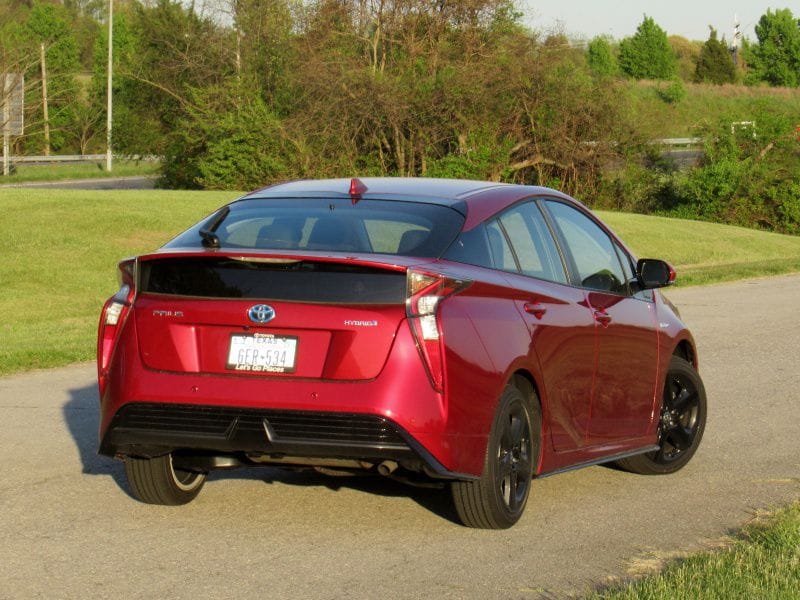
Photo by Brady Holt
Still a Standout
Although the Prius is no longer the only game in town for maximum fuel economy, it’s a pleasant, spacious, safe, and reliable car that also can easily surpass 50 mpg. It also offers the most distinctively hybrid feel in its segment, with everything from the appearance to the gear selector working to remind drivers that they’re not in any old car. More importantly, with better driving dynamics than ever, and the cool factor of the new double-height infotainment screen, the Prius is staying fresh in a crowded segment.
Buyers agree. Ever since its debut, the Prius has been the best-selling gas-electric vehicle in the country. Some pundits grumble that buyers are merely loyal to a familiar name. But the Prius remains a standout on its merits. You may not love its styling, and you may want a quieter engine or more advanced smartphone integration. But if fuel savings are key, don’t miss the Prius.
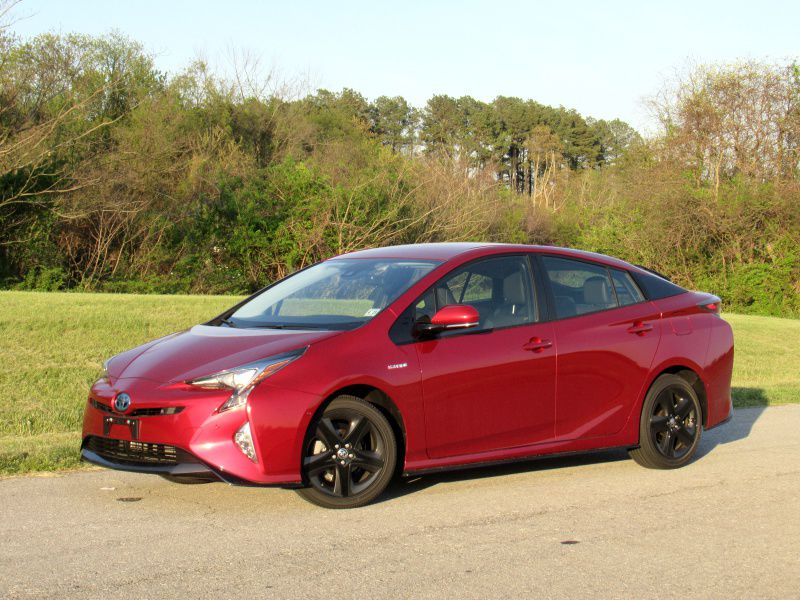
Photo by Brady Holt